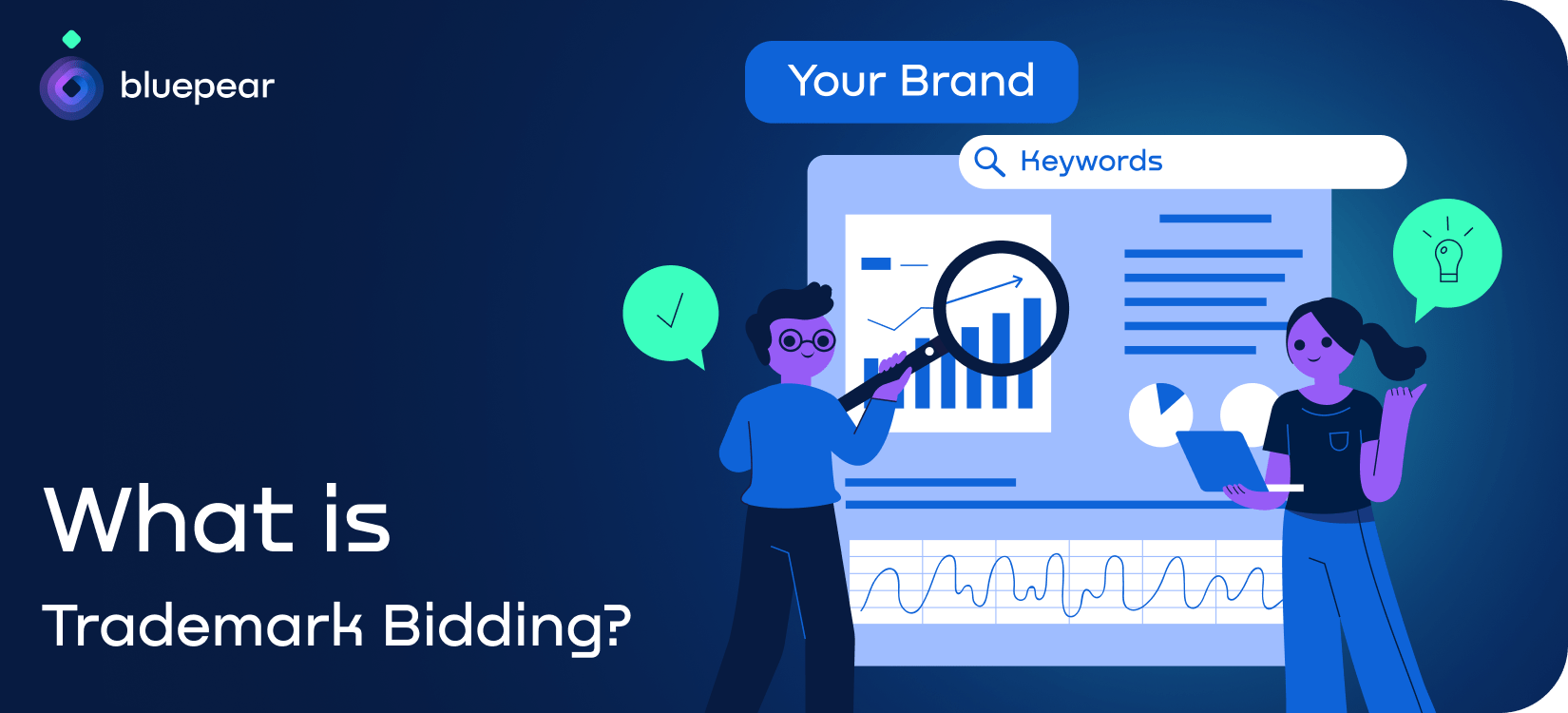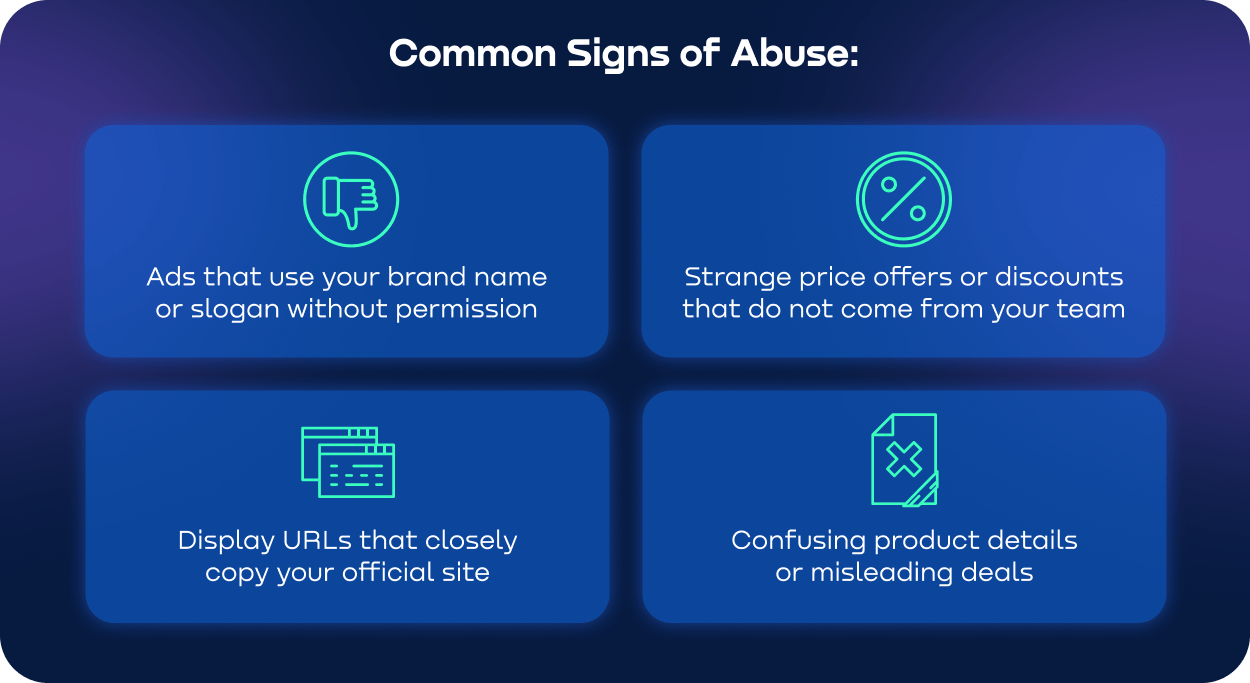
Contents
Some dishonest advertisers see well-known brand names as a quick path to profit, especially if they can attract people into clicking on fake or unauthorized ads. This behavior often leads to abuse of trademark, which can confuse customers, harm a company’s reputation, and raise its marketing costs.
A TM bidder might even pay for ads that include your name just to steal traffic or earn undeserved commissions. Many organizations learn about these issues after they start losing sales or hearing from customers who landed on the wrong site. Still, the scale of trademark abuse can be shocking once you look closely at every ad displayed for your brand’s keywords.
Why Brand Names Are Targeted
Brand names draw people who are already interested in buying or learning more, so each visit they bring is highly valuable. This is where abuse of trademark becomes a serious threat, because a sneaky TM bidder may place ads under your brand and divert traffic. This kind of trademark abuse often may be found in search results, where users can easily click the wrong link by mistake. Some offenders even include trademarks in ad text to appear legitimate. Ignoring these tactics can mean lost revenue and a weakened reputation. In fact, many companies only notice problems once they monitor their trademarks in paid search and discover ads they never authorized.
Common Signs of Abuse
To spot these threats early, it helps to recognize common signs of abuse of trademark. Regular reviews can reveal if a TM bidder is flooding search results or if certain ad messages look questionable. Below are a few warning signs:
• Ads that use your brand name or slogan without permission
• Strange price offers or discounts that do not come from your team
• Display URLs that closely copy your official site
• Confusing product details or misleading deals

Types of TM Bidders
Different advertisers might commit abuse of trademark, usually in hopes of making quick money or gaining more visibility. An affiliate may become a TM bidder if they see a chance to earn bigger commissions by bidding on your name. Some competitors practice trademark abuse by capturing buyer interest before users reach your official website.
Lead generators or search arbitragers might also jump into auctions for trademarks in paid search, even if they have no real service to offer. In some cases, these players put trademarks in ad text to look like your brand’s partner. Many businesses issue strict rules for affiliates and partners, explaining what is and isn’t allowed. Still, it takes ongoing tracking to catch offenders, which is why solutions like Brandvoodoo PPC brand protection or Bluepear add a valuable layer of security.
Costs of Ignoring the Problem
When a TM bidder targets your branded keywords, the price you pay per click can rise simply because you are now competing against another ad. Shoppers may see multiple ads with your name, get confused, and end up on a site with little to do with you.
This abuse of trademark can also reduce trust in your own ads, as people might question why so many pages seem to represent your brand. In the long run, this type of trademark abuse can damage loyalty and push customers to other choices.
If violators place your trademarks in ad text, they often pretend to be you or an authorized partner, making the problem worse. Left unchecked, it becomes harder to tell real ads from fake ones, leading to lost sales and a damaged brand image.
Setting Clear Guidelines
One effective way to limit abuse of trademark is to create clear rules for affiliates, partners, and resellers. For example, you might require them to:
• Avoid brand bidding on your branded keywords entirely
• Remove any mention of your brand from ad copy unless you give written approval
These rules make it simpler to spot violations and take swift action. You can also warn partners that any breach will lead to a canceled contract or legal measures. Another best practice is to host regular training sessions so everyone understands why your brand standards matter. Honest partners usually appreciate this clarity, and it discourages those who might consider shady methods.
Ongoing Monitoring and Enforcement
Even with strict policies in place, constant tracking is necessary to prevent abuse of trademark. Some advertisers will push limits if they see an easy chance to earn extra money.
Frequent searches for your brand name can help you find suspicious ads, and you can save screenshots, landing page details, or any other proof. If you identify an affiliate contract violation, you can alert the search engine, send a notice to the advertiser, or seek legal advice.
Consistent follow-up often scares away repeat offenders. Each time you remove a major violator, you protect your loyal customers, defend your brand’s reputation, and show that you take enforcement seriously.
Stronger Safeguards with Bluepear
Keeping watch over your brand’s keywords can reveal new threats before they cause lasting damage. Tools like Bluepear can help you spot who’s bidding on your brand name, gather documentation of those ads, and set aside placements you do not want.
Once you pinpoint the offender, you can develop clear guidelines to regulate their use of your trademarked terms. Over time, consistent enforcement and a clear policy discourage future violations, helping your brand remain trusted and distinct.
A strong defense against these violations requires clear guidelines, steady monitoring, and a willingness to take action when you see wrongdoing. By staying alert, you reduce wasted advertising costs and protect the trust that customers place in your brand name. While the fight against unfair tactics can feel never-ending, each step you take toward stopping them helps preserve both your revenue and your good reputation.
FAQ
Why are brand names frequently targeted in PPC campaigns?
Brand terms pull in users who already plan to buy, making them extremely valuable. That’s why trademark-abuse is common — TM bidders can siphon ready-to-convert traffic with minimal effort by showing ads under your name.
What are common signs that trademark-abuse is happening?
Unauthorized ads using your brand, misleading prices, imitation display URLs, and ad text that mimics official messaging often indicate brand misuse. These patterns usually appear when offenders try to divert traffic unnoticed.
Who typically engages in this kind of trademark-abuse?
Affiliates chasing higher commissions, aggressive competitors, arbitragers, and lead-gen intermediaries may all bid on your branded keywords. Some even place trademarks in ad text to appear like your partner or an official reseller.
What happens if trademark-abuse goes unchecked?
Your branded CPC rises, customers click misleading ads, and trust in your official listings drops. Over time, this erodes sales, weakens loyalty, and blurs the line between real and unauthorized ads — especially when TM bidders place your trademarks in ad text.
How can clear guidelines reduce unauthorized use of branded terms?
By explicitly banning brand bidding, restricting trademark use in ad copy, and outlining penalties, you create predictable boundaries for affiliates and partners. Clear rules make violations easier to recognize and enforce.
Why is continuous monitoring necessary even with strong policies?
Some advertisers test limits or return under new accounts. Manual checks catch only a fraction of issues, so ongoing monitoring is essential to find hidden ads, collect evidence, and enforce trademark-abuse policies effectively.
How does Bluepear strengthen protection against trademark-abuse?
Bluepear tracks PPC results across devices, GEOs, and times of day, flags ads bidding on your brand, captures screenshots and redirects, and provides evidence reports. This helps you identify TM bidders early and enforce your trademark rules consistently.

